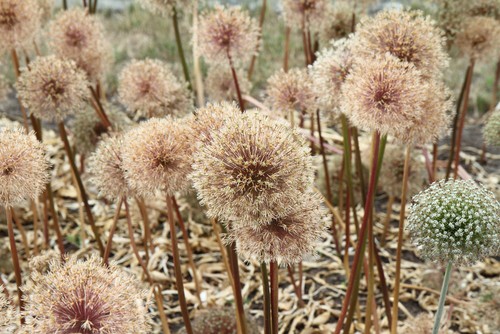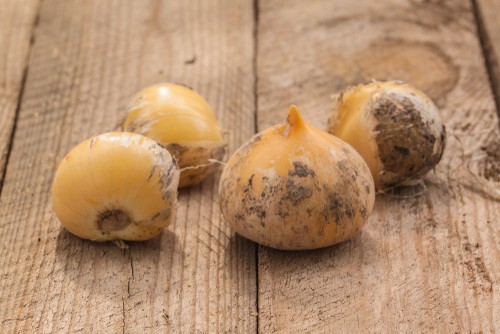Last updated on March 15th, 2022
Our site is reader supported, this means we may earn a small commission from Amazon and other affiliates when you buy through links on our site.
Alliums make the most stunning floral displays that are simply rife with colour. But after they have done their part and the spring and summer come to an end it is time to start thinking about what to do for the plant come winter. Not all plants can survive harsh weather and if you have cultivated successful Alliums you don’t want that effort to go to waste the following season because winter has ruined all the bulbs. But what should you do with them after flowering?
Remove the flowers when they have finished but do not remove the leaves. Once the leaves have naturally died back, shrivelled and turned yellow, the leaves can be cut to ground level. Every 3-4 years divide bulbs, at the same time replanting some in the same area, and planting new bulbs in new positions.
First of all, do not remove any of the dying leaves from the plant until all of the leaves have died, this means they will be shrivelled and turned yellow and brown. It might not be the most attractive of displays, but even the dying leaves are gathering nutrients to store for winter and if you prematurely remove the dying leaves you will starve the plant during dormancy and as a result, you might not get flowers the following season, so don’t be tempted to remove the leaves too early. But once you are ready to remove flowers that have run their course and dying leaves, what do you do next?
Learn more about how and when to plant Alliums here.
Overwintering Alliums

Plants that are grown in the ground are typically hardy and depending on where you live won’t need much care over winter. It is, however, beneficial to cover them with mulch to help protect against severe cold.
Plants grown in containers might be more susceptible to frost and cold snaps. That being said, you can help them by first moving them into a more sheltered spot if you can. Bringing them indoors or into a cold greenhouse, or somewhere protected from direct rain and snow can be helpful. You can also aid them by placing them in a cold frame or in the lee of a garden wall.
Dividing Overgrown Plants
If you have older plants, chances are they have outgrown (or will soon outgrow) their available space. If that happens, you can divide the overgrown plants and replant them. Ideally, you want to divide them every 3-4 years.
For this, you should wait until after the foliage and the flowers have died down. Depending on the size of the plant you might need a spade or shovel and another pair of helping hands. Cut into the soil around the plant, be mindful of the root system, and remove the dirt still intertwined with the roots. Pull free the entire clump and after dusting it off, look for the natural dividing point against which you can take a spade and cut straight down to divide the plant.

These divided sections can be replanted, some back in the original space, and the second elsewhere to form new displays.
Some simple measures of protection can help to overwinter your Alliums and once things get too big, just divide and conquer. These overgrown plants give you the opportunity to multiply your flowers and enjoy blooms much faster than with propagation too.


